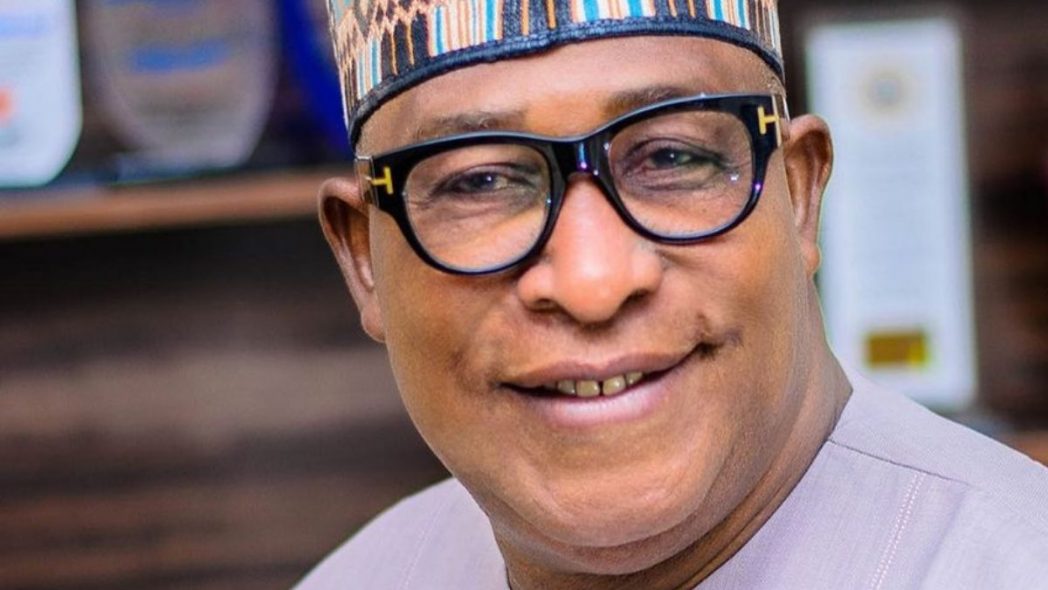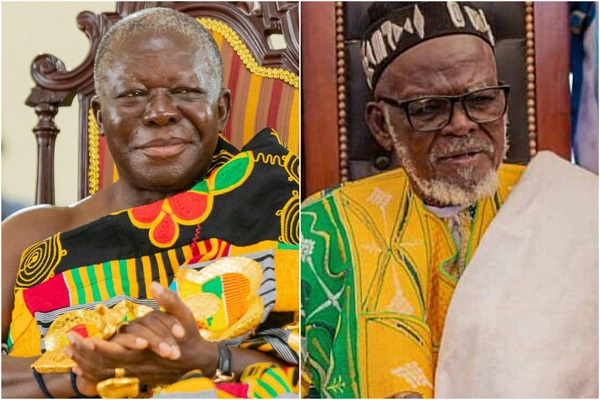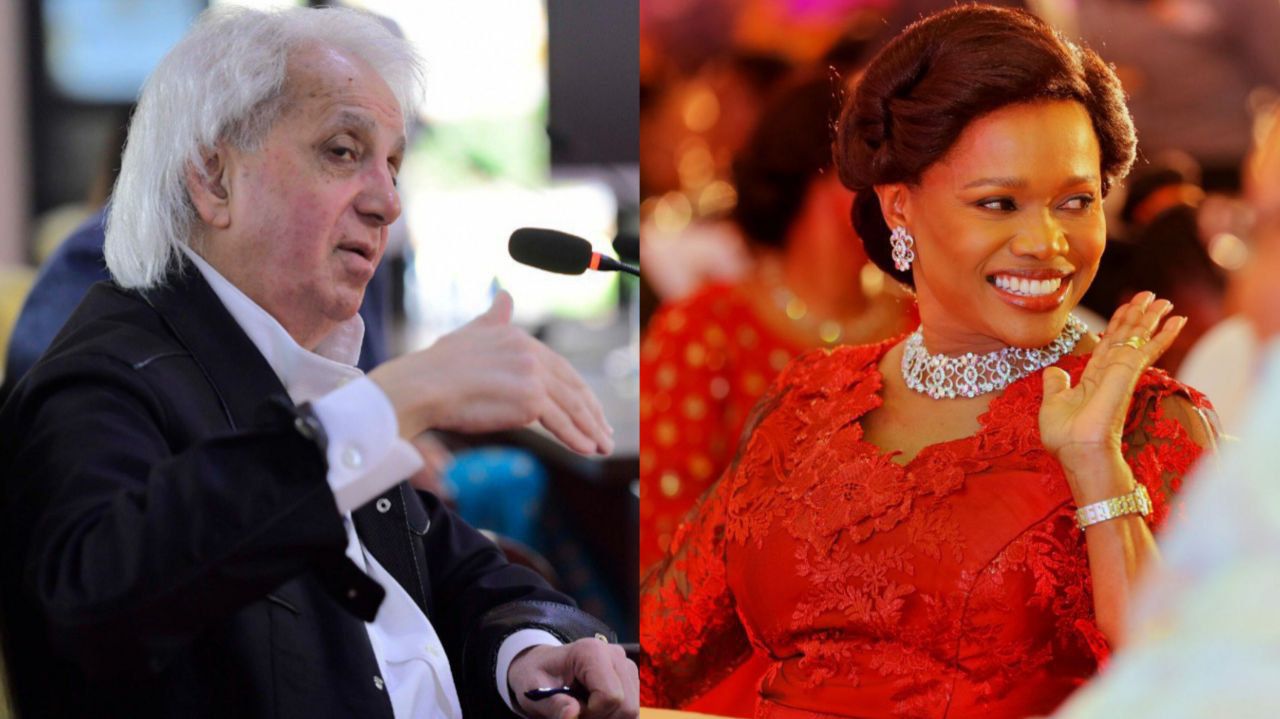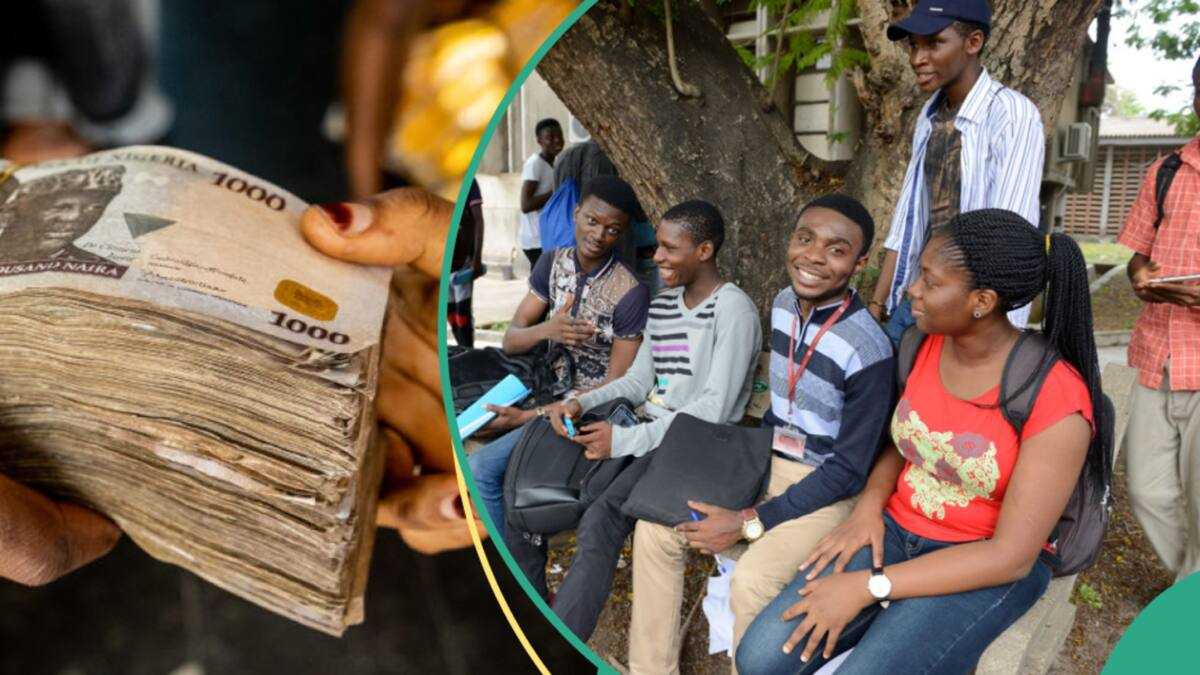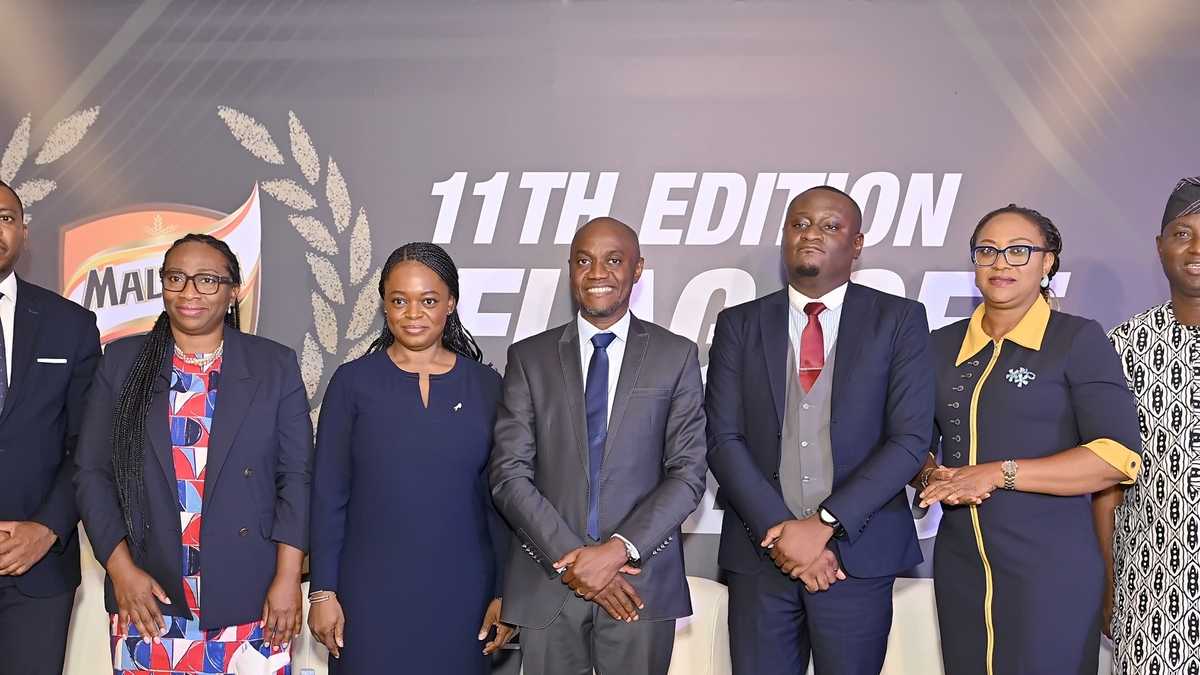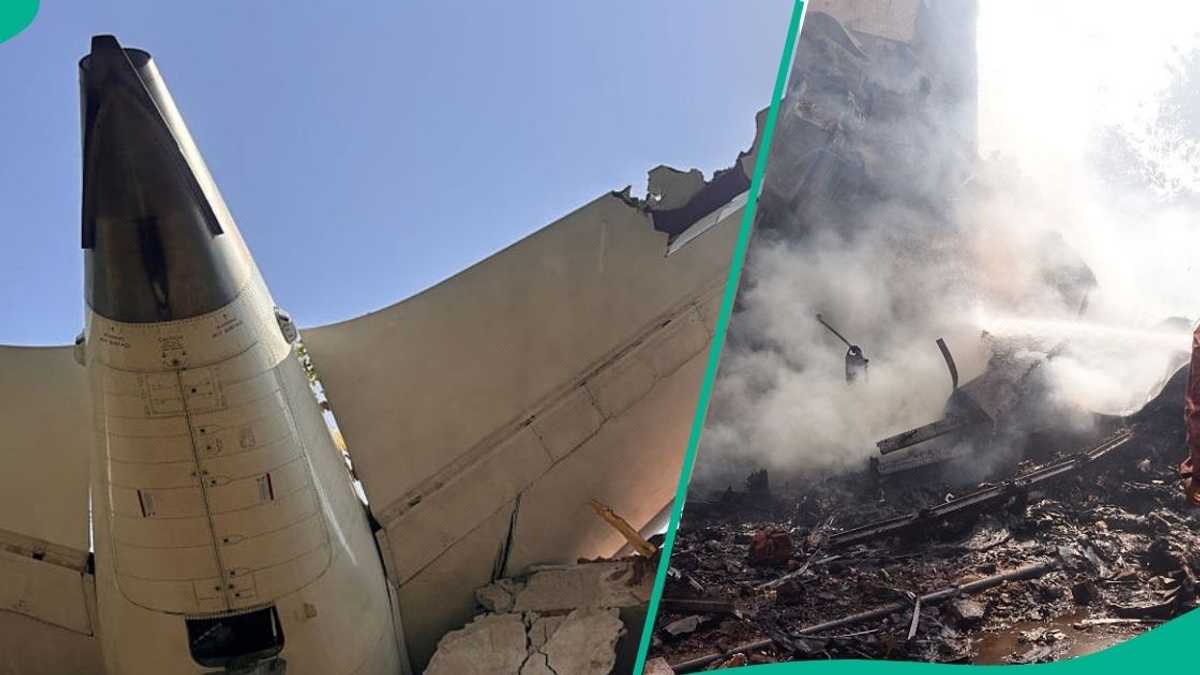Kumbh Mela: BBC investigation reveals hidden deaths at India festival crush
The official death toll is 37, but the BBC found 26 additional cases where families received partial compensation in cash, and 18 more deaths where no payment was made.
On 25 March, a team of plain-clothed police officers from India's northern Uttar Pradesh (UP) state arrived in neighbouring Bihar with bundles of cash.
The team visited Gopalganj city, where they met the family of 62-year-old Tara Devi. They handed over 500,000 rupees ($5,758; £4,291) in cash to her son, Dhananjay Gond, and asked him to record a statement on video.
In the video, Dhananjay introduces himself, saying: "My mother Tara Devi and I went to the Kumbh Mela for a holy dip. My mother died. Officers from UP came and gave us 500,000 rupees. We have received it."
Dhananjay says his mother was killed in the crowd crush in the city of Prayagraj in UP on 29 January.
The UP government has not yet released an official list of the crush victims. Tara Devi's son says police told him the money he got was the first instalment of the 2.5m rupees officially promised to victims' families. Dhananjay says he hasn't received the remaining 2m rupees.

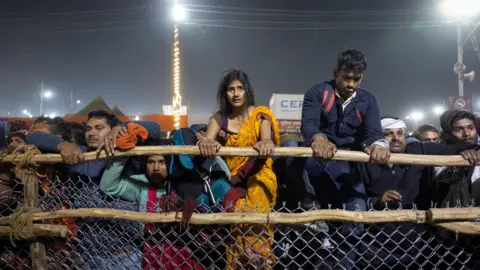 Reuters
Reuters
The UP government says it has paid 2.5m rupees each to the families of 35 victims (of the 37 deaths, one victim remains unidentified, and another does not have a legal heir). A three-member judicial commission set up to investigate the incident and submit a report within a month has had its tenure extended.
The BBC, however, found one more family which was given a cheque of 2.5m rupees. For the other 35 victims, the compensation was transferred to relatives' bank accounts.
Apart from this, the BBC found 26 cases - including that of Tara Devi - where police paid 500,000 rupees in cash at people's homes.
In many instances, officials had families sign documents blaming health issues for the deaths, despite them insisting that their relatives died in the crush. (The UP government typically does not compensate for natural deaths during the Kumbh, held every 12 years.)
The BBC also confirmed 18 deaths where no compensation was given (excluding the case mentioned above where there was no legal heir).
It also found evidence of four separate crush incidents in Prayagraj on 29 January, despite Chief Minister Yogi Adityanath's claim that only one occurred at what is called the Sangam nose - the point of confluence of three sacred rivers, Ganga, Yamuna and the mythical Saraswati.
In the weeks after the Kumbh crush, the BBC met over 100 families across 11 states in India, who claimed their relatives died in the tragedy. It verified 82 deaths in total with concrete evidence, excluding cases lacking proof.

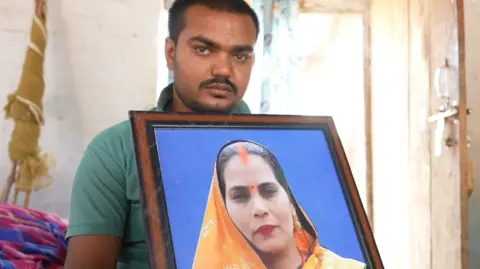
Some families hold post-mortems, morgue slips, death certificates, or photos and videos as proof. The BBC cross-checked local newspaper reports and spoke to district reporters to trace where bodies were received, mapped these locations, and then visited the victims' families.
The BBC interviewed families and eyewitnesses to reconstruct timelines for each case - when the victims left for the holy dip, the time of the crush, nearby landmarks, the distance from the bathing site and the immediate aftermath.
From these detailed accounts, clear patterns emerged, leading to the identification of four crush locations: Sangam Nose, Jhusi side of Samudrakup Chauraha, Airavat Marg, and Mukti Marg Chauraha near Kalpavriksha Gate.
Most of the full 2.5m-rupee compensation cases list the death location as "Ward No. 7, Fort Cantt, Prayagraj", about 1.5km (0.9 miles) from Sangam Nose.
In contrast, the cases that received 500,000 rupees mostly mention "Sector-20 or Sector-21, Kumbh Mela area, Jhusi". Some of these families claim their relatives also died near Sangam Nose, but that their certificates wrongly cite Jhusi - possibly to downplay the scale of the tragedy there.
As for the 18 families which did not receive any compensation, there does not seem to be a common thread binding them.
For instance, at one crush location, the BBC identified five bodies through photos and the numbers issued during post-death formalities. Of these, the families of three victims received 500,000 rupees in cash, while the other two received nothing. Some other families have photographs from the day of the crush which show bodies of their relatives, but these deaths have not been acknowledged by the government.
The BBC repeatedly tried to contact UP government officials, emailing the information department and district magistrate. Despite promises by the district magistrate's office, no call was arranged. Attempts to reach the UP police chief went unanswered, while Prayagraj's police commissioner at the time of the incident, Tarun Gaba, and Mela officer Vijay Kiran Anand refused to answer questions.
The BBC has also found evidence of deaths in crushes that took place at locations other than the Sangam Nose, which the government has acknowledged through giving some compensation.

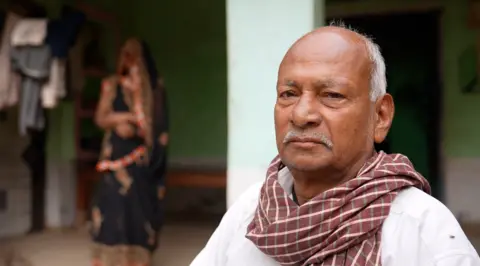
In UP's Jaunpur, Dharmbir Rajbhar received 500,000 rupees each for the deaths of his wife and daughter-in-law in the Airavat Marg crush.
A video shot by the BBC on 29 January shows the family sitting with both bodies at the site. Back home, Rajbhar displayed the cash bundles and said, "The government promised 2.5m rupees, but the police gave only 500,000 rupees each and left."
The UP police also travelled hundreds of kilometres to Paschim Bardhaman in West Bengal, where they handed over 500,000 rupees to the family of Vinod Ruidas.
Not all families accepted the amount, though. In Bihar, the relatives of Sunaina Devi rejected it. They told the BBC that they refused to "sign false documents".
The BBC also identified at least five families who lost their relatives near Kalpavriksha Gate, about 3-4km from Sangam Nose.
Kusum Devi, the wife of Panne Lal Sahni, says that her husband died around 8am on 29 January. "People were stepping over his body. I sat in the sun with his corpse until 4pm. No-one even gave us water," she says. The family received 500,000 rupees in cash.
Relatives of all five people who died near the Kalpavriksha Gate, had similar stories to narrate - they sat with the bodies from morning till evening.
Over time, 18 more families came forward claiming their relatives died in the crush but they haven't received compensation yet.
Among the 18 is Meena Pandey from Sultanpur, UP, who travelled to the Kumbh with her husband, and neighbour Archana Singh. Archana recalls sitting with Meena's body at the crush site until 3pm - seven hours after the crush.
Despite claims of 2,750 AI-enabled CCTVs, 50,000 security personnel, drones and ambulances, no help arrived, relatives said.
By afternoon the body had begun to decay, says Archana.
"We had no choice but to carry it home in our vehicle."

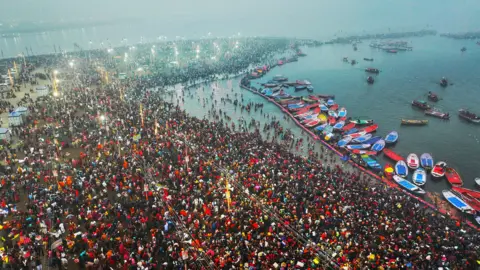 Uttar Pradesh Information Department
Uttar Pradesh Information Department
Like Meena Pandey's family, relatives of Shyamlal Gond from UP's Deoria are still waiting for compensation.
His son, Bhagirathi Gond, works as a daily wage labourer in Bengaluru. After the crush, he travelled to Prayagraj looking for his father, and reached the hospital on 3 February.
According to a slip from the hospital, Shyamlal Gond was brought in dead at 10.02 local time on 29 January.
"My father was listed as unidentified. To maintain records, they [hospital staff] had kept a file. They took a photo of the body in the condition it was found and pasted it into a register."
He adds, "It was difficult to identify him through the photo. After the fall, his head was bent down, chest pushed upward, and his face had slightly turned."
Bhagirathi says the hospital staff would not give him a death certificate or any other papers.
"They told me to take the body, but I said I would only do so if some official procedure was followed," he said.
It took four months before he got the death certificate. But he is still waiting for compensation for his loss.
"The government has still not acknowledged that my father died in the crush."
Follow BBC News India on Instagram, YouTube, Twitter and Facebook.
